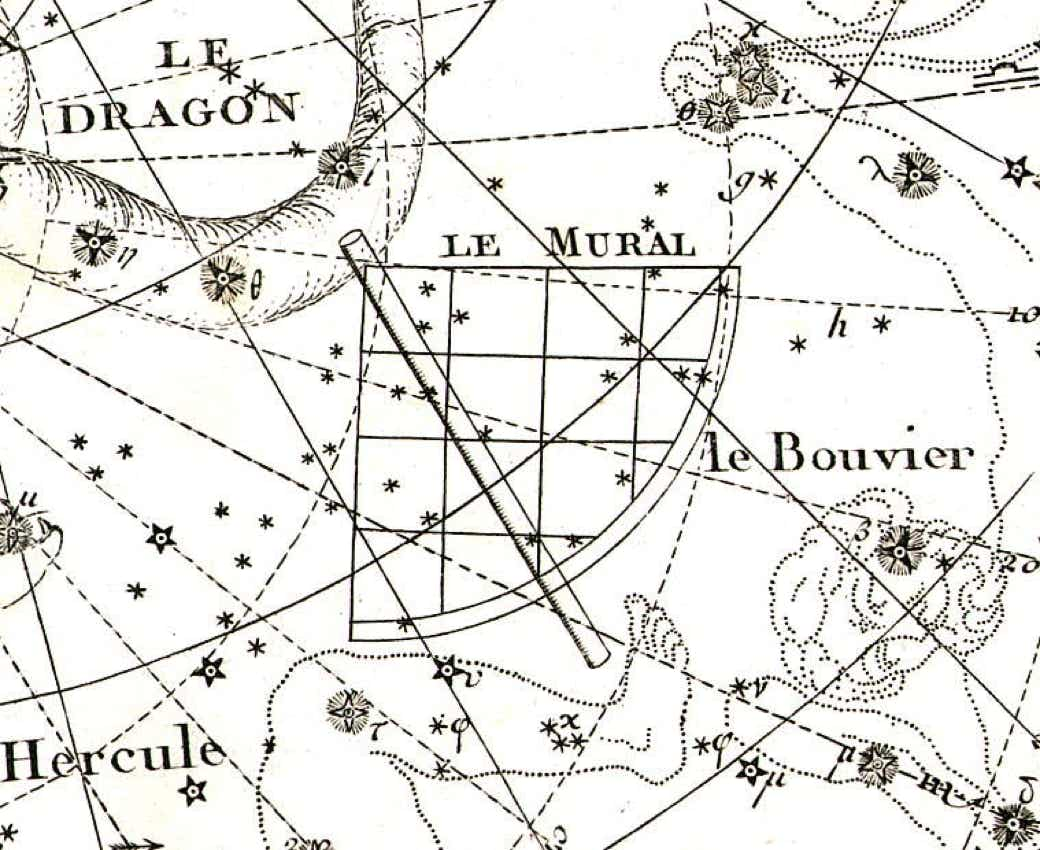Lalande’s Quadrans Muralis
Quadrans Muralis was created by the French astronomer Joseph Jérôme de Lalande from a sprinkling of faint stars in the otherwise unoccupied region in the northern sky between the kneeling leg of Hercules, the head and arm of Boötes, and the body of Draco.
It first appeared as seen below under the French name Le Mural in the 1795 edition of the Atlas Céleste of Jean-Baptiste Fortin, which was edited by Lalande and Pierre Méchain. Its name was Latinized by the German astronomer Johann Bode in 1801 on his Uranographia star atlas. Bode also shrank the constellation slightly to avoid overlap with its neighbours.

In the Connaissance des Temps for 1796 Lalande explained that he had invented the constellation to commemorate the instrument with which he and his nephew Michel Lefrançois de Lalande (1766–1839) catalogued tens of thousands of stars at the observatory of l’École Militaire (Military School) in Paris. The quadrant, of 8 ft radius, had been made in 1774 by the English instrument maker John Bird (1709–76) and was a copy of the quadrant that Bird had made for James Bradley at Greenwich in 1750. Lalande said he hoped that future astronomers would ‘gladly preserve a constellation designed to recall its memory’, but in the event astronomers decided the constellation was too faint to be worth keeping.
(Image: Author’s collection.)
© Ian Ridpath. All rights reserved